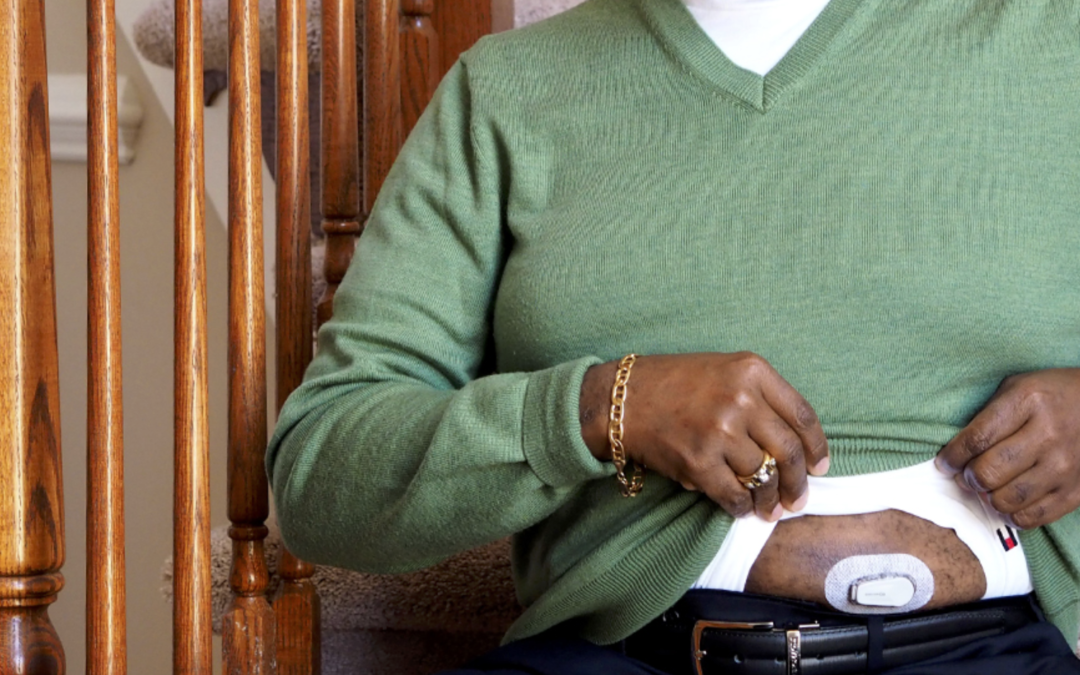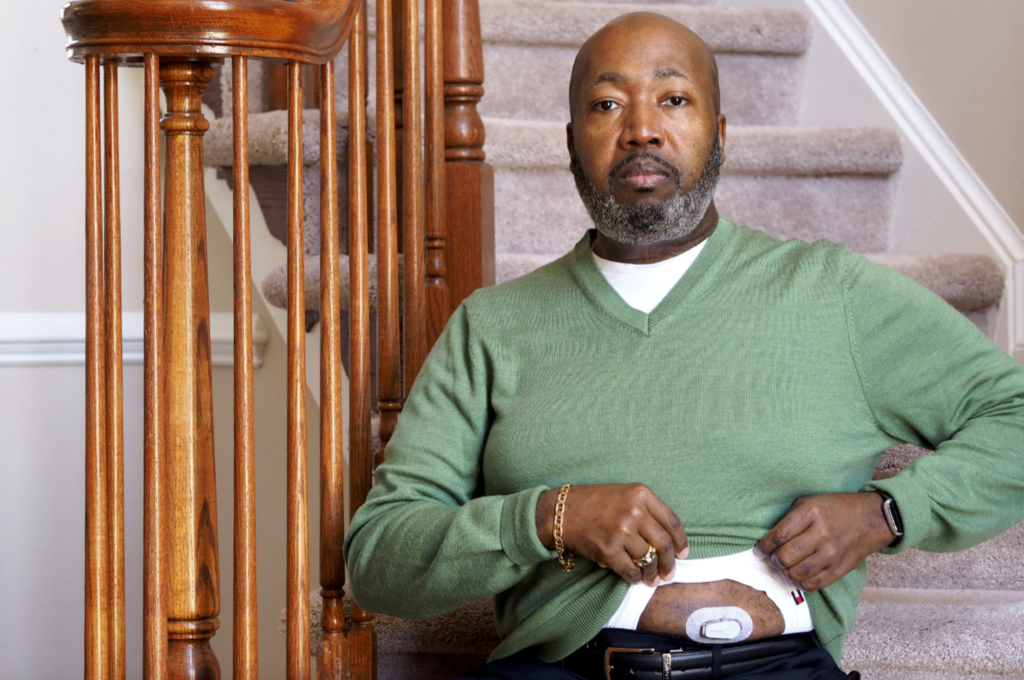
by Adelle M. Banks, RNS | Mar 19, 2021 | Headline News |

Prison Fellowship has joined forces with criminal justice and prosecutorial organizations to support bipartisan efforts to reduce disparities in sentences that punish Black Americans more harshly than white Americans.
The #EndtheDisparity campaign, a partnership with organizations such as Families Against Mandatory Minimums, has recently focused on the 18-1 ratio in federal sentencing for distributing crack cocaine versus the drug in powdered form. Advocates are pushing for a 1-1 ratio instead.
“We think this is so important an issue and that action is needed now to correct this now long-standing injustice,” said Prison Fellowship President and CEO James Ackerman at an online roundtable with journalists on Tuesday (March 9).
After reading from the biblical Book of Proverbs that “The Lord abhors dishonest scales but accurate weights are his delight,” Ackerman said the disparities in cocaine sentencing are unfair to all Americans but especially to African Americans.
RELATED: Evangelical leaders push for criminal justice reform
According to the U.S. Sentencing Commission, 81% of crack cocaine trafficking offenders in 2019 were Black, when African Americans comprise a much lower percentage of the U.S. population.
“Think about it: the African American community represents 13.4% of the citizenry of America but 81% of the people convicted for crack cocaine distribution in 2019 alone were African American,” said Ackerman, leader of the 45-year-old evangelical prison ministry founded by former prisoner and Nixon aide Chuck Colson.
“That’s not right and this has existed too long.”
The campaign comes at a time when legislation is being discussed on Capitol Hill that would end the sentencing disparities.
In January, Sens. Dick Durbin, D-Ill., and Cory Booker, D-N.J., introduced the EQUAL Act, whose acronym stands for “Eliminating a Quantifiably Unjust Application of the Law.”
On Tuesday, a bipartisan group of House members — Rep. Hakeem Jeffries, D-N.Y., Bobby Scott, D-Va., Kelly Armstrong, R-N.D., and Don Bacon, R-Neb — introduced the House version of the bill.
Previously, Durbin introduced the Fair Sentencing Act, which passed in 2010 and reduced the disparity from 100-to-1, when someone sentenced for distributing 5 grams of crack cocaine served the same amount of time — five years in prison — as someone who was apprehended for distributing 500 grams of powder cocaine.
William Curtis, who was sentenced when the 100-to-1 disparity was in force, told reporters during the online roundtable discussion that he saw the differences in treatment while he was in prison for 20 years and six months for selling $20 and $50 rocks of cocaine.
“I sat in prison many a day and saw people sentenced under powder — white people sentenced under powder — get out of prison, go home, turn around and come back for doing the same thing and then they would get out of prison again, go home, turn around and come back and I’m still here,” he recalled.
Curtis, a Black man, is now continuing the rest of his 327-month sentence under home confinement in Tennessee due to COVID-19 precautions.
FAMM President Kevin Ring said the “political compromise” attained previously to reduce the disparity to 18-to-1 needs to be followed by a complete elimination of the difference in sentencing for distribution of two different forms of the drug.
“The crack powder disparity is the most obnoxious of the discriminatory aspects in our federal justice system,” he said. “Now it is time to finish the job and we think this is a matter of criminal justice and racial justice at a time where our country needs both.”
Heather Rice-Minus, Prison Fellowship’s senior vice president of advocacy and church mobilization, noted that more than 40 states already have laws with 1-1 ratios for punishments related to powder and crack cocaine.
Ring and roundtable participant Frank Russo, director of government and legislative affairs of the National District Attorneys Association, called the disparity a “moral issue” that needs to be addressed.
Russo said his association of local and state prosecutors endorses “common-sense reforms such as the EQUAL Act to improve our nation’s justice system and ensure that we are applying justice equitably.”

by Phil Galewitz, Kaiser Health News | Mar 19, 2021 | Headline News |

Trevis Hall, of Fort Washington, Maryland, credits a continuous glucose monitor with helping him get his diabetes under control. Makers of the device say that the instant feedback provides a way to motivate healthier eating and exercise. But experts point out that the few studies on the monitors show conflicting results. (LYNNE SHALLCROSS / KHN)
A continuous glucose monitor holds a tiny sensor that’s inserted just under the skin, alleviating the need for patients to prick their fingers every day to check blood sugar. The monitor tracks glucose levels all the time, sends readings to patients’ cellphone and doctor, and alerts patients when readings are headed too high or too low.
Nearly 2 million people with diabetes wear the monitors today, twice the number in 2019, according to the investment firm Baird.
There’s little evidence continuous glucose monitoring (CGM) leads to better outcomes for most people with diabetes — the estimated 25 million U.S. patients with Type 2 disease who don’t inject insulin to regulate their blood sugar, health experts say. Still, manufacturers, as well as some physicians and insurers, say the devices help patients control their diabetes by providing near-instant feedback to change diet and exercise compared with once-a-day fingerstick tests. And they say that can reduce costly complications of the disease, such as heart attacks and strokes.
Continuous glucose monitors are not cost-effective for Type 2 diabetes patients who do not use insulin, said Dr. Silvio Inzucchi, director of the Yale Diabetes Center.
Sure, it’s easier to pop a device onto the arm once every two weeks than do multiple finger sticks, which cost less than a $1 a day, he said. But “the price point for these devices is not justifiable for routine use for the average person with Type 2 diabetes.”
Without insurance, the annual cost of using a continuous glucose monitor ranges from nearly $1,000 to $3,000.
Lower Prices Help Propel Use
People with Type I diabetes — who make no insulin — need the frequent data from the monitors in order to inject the proper dose of a synthetic version of the hormone, via a pump or syringe. Because insulin injections can cause life-threatening drops in their blood sugar, the devices also provide a warning to patients when this is happening, particularly helpful while sleeping.
People with Type 2 diabetes, a different disease, do make insulin to control the upswings after eating, but their bodies don’t respond as vigorously as people without the disease. About 20% of Type 2 patients still inject insulin because their bodies don’t make enough and oral medications can’t control their diabetes.
Doctors often recommend that diabetes patients test their glucose at home to track whether they are reaching treatment goals and learn how medications, diet, exercise and stress affect blood sugar levels.
The crucial blood test doctors use, however, to monitor diabetes for people with Type 2 disease is called hemoglobin A1c, which measures average blood glucose levels over long periods of time. Neither finger-prick tests nor glucose monitors look at A1c. They can’t since this test involves a larger amount of blood and must be done in a lab.
The continuous glucose monitors also don’t assess blood glucose. Instead they measure the interstitial glucose level, which is the sugar level found in the fluid between the cells.
Companies seem determined to sell the monitors to people with Type 2 diabetes — those who inject insulin and those who don’t — because it’s a market of more than 30 million people. In contrast, about 1.6 million people have Type 1 diabetes.
Helping to fuel the uptake in demand for the monitors has been a drop in prices. The Abbott FreeStyle Libre, one of the leading and lowest-priced brands, costs $70 for the device and about $75 a month for sensors, which must be replaced every two weeks.
Another factor has been the expansion in insurance coverage.
Nearly all insurers cover continuous glucose monitors for people with Type 1 diabetes, for whom it’s a proven lifesaver. Today, nearly half of people with Type 1 diabetes use a monitor, according to Baird.
A small but growing number of insurers are beginning to cover the device for some Type 2 patients who don’t use insulin, including UnitedHealthcare and Maryland-based CareFirst BlueCross BlueShield. These insurers say they have seen initial success among members using the monitors along with health coaches to help keep their diabetes under control.
The few studies — mostly small and paid for by device-makers — examining the impact of the monitors on patient’s health show conflicting results in lowering hemoglobin A1c.
Still, Inzucchi said, the monitors have helped some of his patients who don’t require insulin — and don’t like to prick their fingers — change their diets and lower their glucose levels. Doctors said they’ve seen no proof that the readings get patients to make lasting changes in their diet and exercise routines. They said many patients who don’t use insulin may be better off taking a diabetes education class, joining a gym or seeing a nutritionist.
“I don’t see the extra value with CGM in this population with current evidence we have,” said Dr. Katrina Donahue, director of research at the University of North Carolina Department of Family Medicine. “I’m not sure if more technology is the right answer for most patients.”
Donahue was co-author of a landmark 2017 study in JAMA Internal Medicine that showed no benefit to lowering hemoglobin A1c after one year regularly checking glucose levels through finger-stick testing for people with Type 2 diabetes.
She presumes the measurements did little to change patients’ eating and exercise habits over the long term — which is probably also true of continuous glucose monitors.
“We need to be judicious how we use CGM,” said Veronica Brady, a certified diabetes educator at the University of Texas Health Science Center and spokesperson for the Association of Diabetes Care & Education Specialists. The monitors make sense if used for a few weeks when people are changing medications that can affect their blood sugar levels, she said, or for people who don’t have the dexterity to do finger-stick tests.
Yet, some patients like Trevis Hall credit the monitors for helping them get their disease under control.
Last year, Hall’s health plan, UnitedHealthcare, gave him a monitor at no cost as part of a program to help control his diabetes. He said it doesn’t hurt when he attaches the monitor to his belly twice a month.
The data showed Hall, 53, of Fort Washington, Maryland, that his glucose was reaching dangerous levels several times a day. “It was alarming at first,” he said of the alerts the device would send to his phone.
Over months, the readings helped him change his diet and exercise routine to avert those spikes and bring the disease under control. These days, that means taking a brisk walk after a meal or having a vegetable with dinner.
“It’s made a big difference in my health,” said Hall.
This Market ‘Is Going to Explode’
Makers of the devices increasingly promote them as a way to motivate healthier eating and exercise.
The manufacturers spend millions of dollars pushing doctors to prescribe continuous glucose monitors, and they’re advertising directly to patients on the internet and in TV ads, including a spot starring singer Nick Jonas during this year’s Super Bowl.
Kevin Sayer, CEO of Dexcom, one of the leading makers of the monitors, told analysts last year that the noninsulin Type 2 market is the future. “I’m frequently told by our team that, when this market goes, it is going to explode. It’s not going to be small, and it’s not going to be slow,” he said.
“I believe, personally, at the right price with the right solution, patients will use it all the time,” he added.
KHN (Kaiser Health News) is a national newsroom that produces in-depth journalism about health issues. Together with Policy Analysis and Polling, KHN is one of the three major operating programs at KFF (Kaiser Family Foundation). KFF is an endowed nonprofit organization providing information on health issues to the nation.





